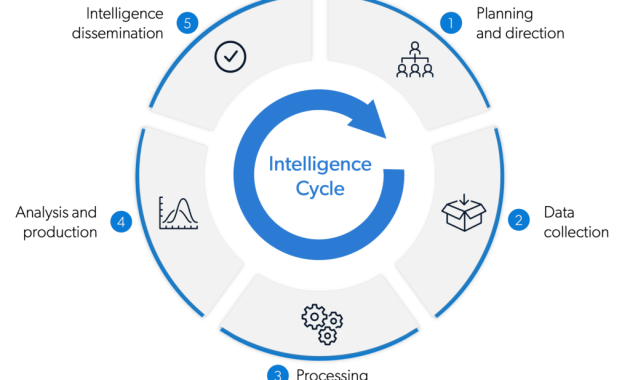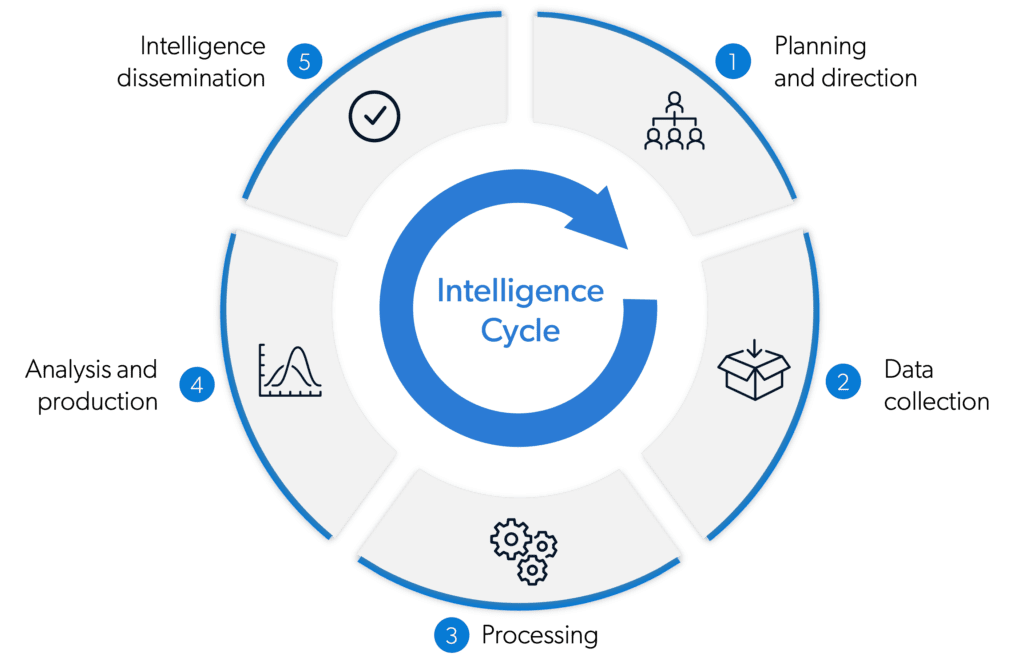
Beginner’s Guide to 15 Business Intelligence Tools Used by Experts
The world runs on data. Businesses generate it, analyze it, and make critical decisions based on it. In today’s data-driven landscape, understanding and utilizing Business Intelligence (BI) tools is no longer a luxury, it’s a necessity. This beginner’s guide will introduce you to 15 essential BI tools, often used by experts, to help you navigate the complexities of data analysis and unlock valuable insights. From data visualization to predictive analytics, these tools empower businesses of all sizes to make informed decisions.
This guide is designed for those new to the world of BI. It provides a foundational understanding of the tools and their applications. You will learn about their core functionalities and how they can transform raw data into actionable intelligence. The goal is to equip you with the knowledge to select the right tools for your specific needs. This will also help you to begin your journey into the world of data analysis.
Understanding Business Intelligence: A Quick Overview
Before diving into the tools, let’s clarify what Business Intelligence entails. BI involves the processes, technologies, and applications used to gather, store, analyze, and provide access to data. The aim is to provide business users with the information they need to make better decisions. This often includes trend analysis, performance monitoring, and predictive modeling. Effective BI leads to increased efficiency, improved profitability, and a competitive advantage.
Essential Categories of Business Intelligence Tools
BI tools are broadly categorized based on their primary function. Understanding these categories helps you choose the right tool for the job. The following categories are key to understanding the functionality of each tool that we will review:
- Data Visualization: These tools transform data into visual representations like charts and graphs. They are essential for conveying complex information in an easily understandable format.
- Data Warehousing: These tools store and manage large volumes of data from various sources. They provide a centralized repository for data analysis.
- Reporting and Dashboards: These tools allow users to create reports and interactive dashboards. They provide real-time insights into key performance indicators (KPIs).
- Data Mining and Analysis: These tools use statistical techniques to discover patterns and insights in data. They are crucial for predictive analytics and identifying trends.
- ETL (Extract, Transform, Load): These tools are responsible for extracting data from different sources, transforming it, and loading it into a data warehouse. This is a critical step in the BI process.
15 Business Intelligence Tools Used by Experts
This is a curated list of 15 Business Intelligence tools, each offering unique capabilities. These tools are frequently used by experts across various industries. This selection includes a mix of open-source, cloud-based, and on-premise solutions. The choice of a specific tool will depend on your organization’s needs and budget. Each tool has its strengths and weaknesses. Consider your requirements before making a decision.
- Tableau: A leading data visualization tool known for its user-friendly interface and powerful analytical capabilities. Tableau allows users to create interactive dashboards and reports with ease. It is a popular choice for businesses of all sizes.
- Microsoft Power BI: A comprehensive BI platform that integrates seamlessly with other Microsoft products. Power BI offers a wide range of features, including data visualization, data modeling, and collaboration tools. It is a cost-effective solution for many businesses.
- Qlik Sense: A data analytics platform that uses an associative data model. Qlik Sense allows users to explore data in a more intuitive way. It uncovers hidden insights and relationships within data.
- Looker: A business intelligence and data analytics platform owned by Google. Looker focuses on data exploration, data modeling, and data governance. It is well-suited for complex data environments.
- Sisense: A business intelligence platform designed for complex data. Sisense excels in handling large datasets and providing real-time insights. It is often used by businesses with demanding analytical needs.
- SAP BusinessObjects: A comprehensive BI suite that offers a wide range of reporting, analysis, and dashboarding tools. SAP BusinessObjects is a popular choice for large enterprises. It integrates well with SAP’s ERP systems.
- IBM Cognos Analytics: A powerful BI platform that provides a wide range of analytical capabilities. IBM Cognos Analytics is known for its advanced reporting and predictive analytics features. It is a good choice for organizations with complex analytical needs.
- Domo: A cloud-based BI platform that provides real-time dashboards and collaboration tools. Domo is designed for ease of use and quick deployment. It is a good option for businesses looking for a fast and efficient BI solution.
- MicroStrategy: An enterprise BI platform that offers advanced analytics and data visualization capabilities. MicroStrategy is known for its scalability and security features. It is often used by large organizations with stringent data governance requirements.
- Yellowfin BI: A collaborative BI platform that focuses on data storytelling and data visualization. Yellowfin BI is designed to make data more accessible and understandable. It is a good choice for businesses that want to improve data literacy.
- Zoho Analytics: A self-service BI and analytics platform. Zoho Analytics is known for its ease of use and affordability. It is a good option for small and medium-sized businesses. It offers a wide range of data connectors.
- SAS Business Intelligence: A comprehensive BI suite that offers advanced analytics and data mining capabilities. SAS BI is known for its statistical analysis and predictive modeling features. It is a popular choice for data scientists and analysts.
- Pentaho: An open-source BI platform that offers a wide range of features, including data integration, reporting, and analysis. Pentaho is a cost-effective solution for businesses that want to customize their BI environment. It offers flexibility and control.
- BIRT (Business Intelligence and Reporting Tools): An open-source reporting system that is part of the Eclipse project. BIRT is used for creating reports and dashboards. It is often integrated with other applications.
- Apache Superset: A modern data exploration and data visualization platform. Apache Superset is designed to be scalable and user-friendly. It is a good choice for businesses that need a flexible and open-source BI solution.
Choosing the Right Business Intelligence Tool
Selecting the right BI tool is crucial for your success. Consider the following factors when making your choice:
- Your Data Sources: Identify the sources of your data (databases, spreadsheets, cloud services, etc.). Ensure the tool supports the necessary data connectors.
- Your Business Needs: Determine your specific analytical requirements (reporting, dashboards, predictive analytics, etc.). Choose a tool that offers the features you need.
- Your Budget: BI tools range in price from free (open-source) to expensive (enterprise-level). Consider your budget when making your decision.
- Your Technical Skills: Some tools are easier to use than others. Consider the skill level of your team when choosing a tool.
- Scalability: Ensure the tool can handle your current and future data volumes. Choose a tool that is scalable to accommodate growth.
The right Business Intelligence tool will empower your team. This will enable them to make better decisions. By carefully considering these factors, you can choose the tool. This will best meet your specific needs.
Implementing and Utilizing BI Tools Effectively
Once you’ve selected a tool, effective implementation is key. Here are some best practices:
- Define Clear Objectives: Establish specific goals for your BI initiative. This will guide your tool selection and implementation.
- Clean and Prepare Your Data: Ensure your data is accurate, consistent, and properly formatted. This is essential for reliable analysis.
- Train Your Users: Provide adequate training to your team on how to use the tool. This will maximize its effectiveness.
- Establish Data Governance: Implement policies and procedures for data management and security. This will ensure data integrity and compliance.
- Monitor and Evaluate: Regularly assess the performance of your BI tools. This will help you identify areas for improvement.
Effective implementation and utilization of Business Intelligence tools will provide significant benefits. This will include improved decision-making and increased efficiency.
The Future of Business Intelligence
The field of Business Intelligence is constantly evolving. New technologies and trends are emerging. Staying informed about these developments is crucial for maintaining a competitive edge. Here are some key trends to watch:
- Artificial Intelligence (AI) and Machine Learning (ML): AI and ML are being integrated into BI tools. This is to automate data analysis and provide predictive insights.
- Cloud-Based BI: Cloud-based BI solutions are becoming increasingly popular. This is due to their scalability and cost-effectiveness.
- Data Democratization: The trend is towards making data accessible to all business users. This empowers them to make data-driven decisions.
- Self-Service BI: Self-service BI tools are empowering users to analyze data. This eliminates the need for technical expertise.
- Big Data Integration: BI tools are increasingly integrating with big data platforms. This allows businesses to analyze vast amounts of data.
Keeping abreast of these trends will help you leverage the full potential of Business Intelligence. You can then make more informed decisions.
Conclusion
Business Intelligence tools are indispensable for data-driven decision-making. This beginner’s guide has provided an overview of 15 essential tools. Each tool offers unique capabilities. This includes data visualization, reporting, and advanced analytics. Remember to consider your specific needs. Choose the tools that best align with your requirements. By embracing Business Intelligence, you can unlock valuable insights. You can also gain a competitive advantage in today’s data-rich world. The key is to select the right tool. Then to implement it effectively. Then to stay informed about the latest trends. This will help you to harness the power of data.
[See also: Best Data Visualization Tools]
[See also: Data Analysis Techniques for Beginners]
[See also: How to Choose the Right BI Platform]

